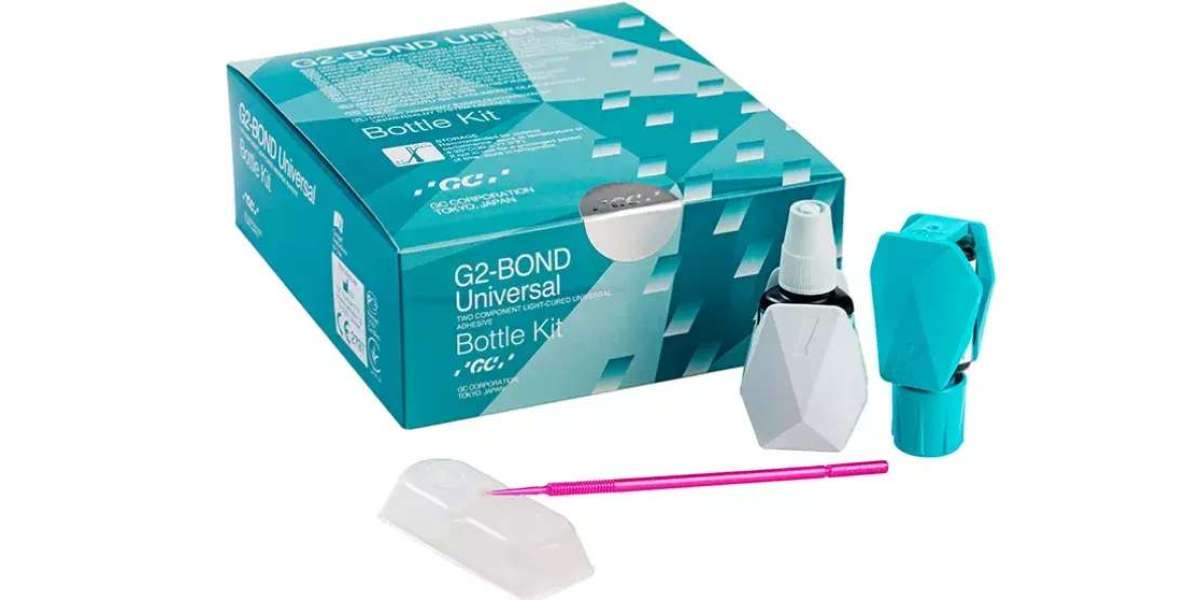A broken tooth can be a distressing experience, causing pain and discomfort while also affecting one's appearance and ability to chew properly. All these issues hinder you from performing your daily activities, leaving you in an irritated mood. Fortunately, modern dentistry offers various solutions to address this issue, with dental cement emerging as a reliable option. This article will explore the role of dental cement in repairing broken teeth, its benefits, and how it contributes to restoring dental health and confidence.
Understanding Dental Cement
Dental cement for broken tooth is a versatile material. It is popularly used for repairing chipped and broken teeth. Also, it is used for sealing dental implants, securing bridges, orthodontic brackets and crowns and filling cavities. As a result, it can be said that this cement is the backbone of restorative dentistry as it offers stability, strength, and aesthetic appeal to dental restorations.
Types of Dental Cement
There are several types of dental cement online available, each with its unique properties and applications. Some common types include:
Glass Ionomer Cement (GIC): GICs are tooth-colored types of cement composed of glass powder and an aqueous solution of polyacrylic acid. They bond chemically to the tooth structure and release fluoride, aiding in remineralization. GICs are commonly used for filling cavities in areas of low stress and for cementing crowns and bridges.
Resin-Modified Glass Ionomer Cement (RMGIC): RMGICs combine the properties of glass ionomer cement with those of resin-based materials. They offer improved strength and adhesion compared to traditional GICs and are often used in restorations requiring higher durability.
Zinc Oxide Eugenol Cement (ZOE): ZOE cement contains zinc oxide powder and eugenol liquid. It provides soothing properties and is often used in temporary fillings and cementation of temporary crowns.
Zinc Phosphate Cement: This cement consists of zinc oxide powder mixed with a solution of phosphoric acid. It has excellent strength and is commonly used for cementing crowns and bridges.
Polycarboxylate Cement: Polycarboxylate cement is composed of zinc oxide powder and a liquid containing polyacrylic acid. It exhibits good adhesion to tooth structure and is often used for cementing crowns, bridges, and orthodontic bands.
Benefits of Dental Cement:
Dental cement is one of the most preferred ways to restore a broken tooth, and the below-listed benefits explain why.
1. Strength and Durability: Dental cement for broken tooth provides structural support to restorations, ensuring they withstand chewing forces and daily wear and tear.
2. Aesthetic Appeal: Many dental cements are tooth-colored, allowing for natural-looking restorations that blend seamlessly with the surrounding teeth.
3. Adhesion: Dental cement forms strong bonds with both the tooth structure and restorative materials, ensuring long-lasting results.
4. Biocompatibility: Most dental cements are biocompatible, minimizing the risk of adverse reactions or sensitivity.
5. Versatility: Dental cement can be used in a wide range of dental procedures, making it a versatile material in restorative dentistry.
Using Dental Cement for Broken Teeth
Leaving a broken tooth untreated will help you with nothing but even more damage. It is where dental cement for broken teeth is used to restore their function and aesthetics. It plays a crucial role in repairing broken teeth by:
1. Bonding fragments: Dental cement can be used to bond fractured tooth fragments together, restoring the tooth's integrity and function.
2. Filling cavities: In cases where a portion of the tooth is lost due to trauma or decay, dental cement can be used to fill the cavity, preventing infection and further deterioration.
3. Securing restorations: Dental cement is used to cement crowns, veneers, or fillings onto the damaged tooth, restoring its shape, strength, and appearance.
Importance of Prompt Treatment
When a tooth breaks, it exposes the inner layers of the tooth, including the pulp, which contains nerves and blood vessels. Prompt treatment is crucial to prevent infection and further damage to the tooth. Dental cement can provide temporary protection until a dentist can place a permanent restoration. It is essential to seek professional dental care as soon as possible to assess the extent of the damage and determine the most appropriate treatment plan.
Preventing Further Damage:
In addition to repairing broken teeth, dental cement can also be used to prevent further damage in situations where a tooth is at risk of fracturing. For example, dental cement can be applied to a cracked tooth to stabilize it and prevent the crack from spreading. This can help avoid the need for more extensive treatments such as root canal therapy or tooth extraction.
Long-Term Solutions:
While dental cement can provide temporary relief and protection, it is often used as part of a comprehensive treatment plan that may involve more permanent restorations such as crowns or veneers. These restorations are custom-made to fit the individual's tooth and provide long-term stability and aesthetics. Dental cement plays a vital role in securing these restorations in place, ensuring they function properly and look natural.
Summing Up
With advancements in dental materials and techniques, broken teeth can be effectively repaired, allowing individuals to regain their smile, function, and confidence. As a leader in dental materials, GC America continues to drive innovation and excellence, contributing to the advancement of modern dentistry and improving patient outcomes globally. Among the leading providers of dental materials, GC America stands out as a pioneer in innovation and quality. With a presence in over 100 countries, it has established itself as a trusted name in the dental industry, offering a comprehensive range of dental cement online.








